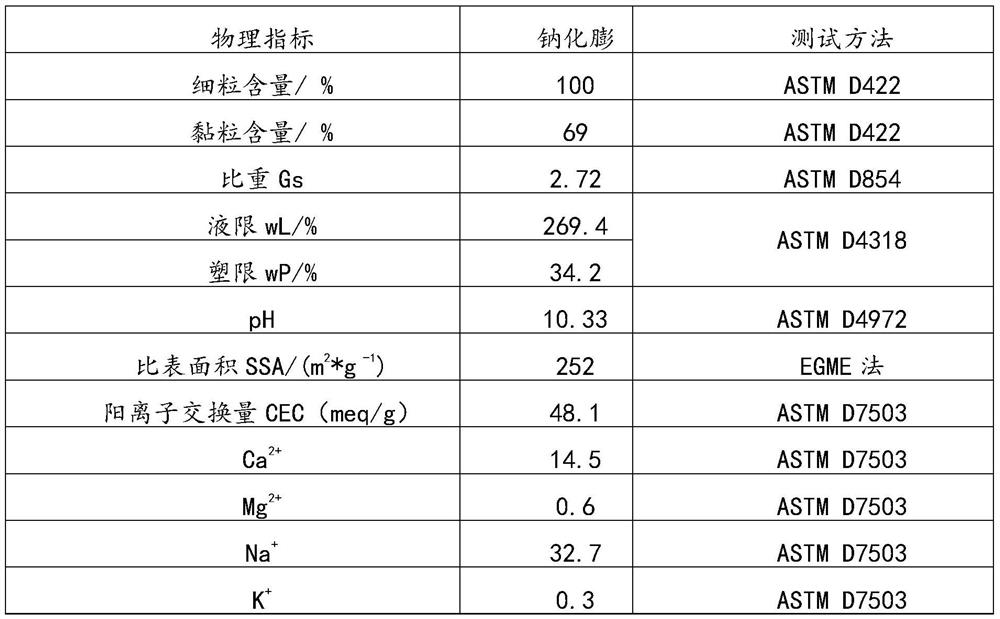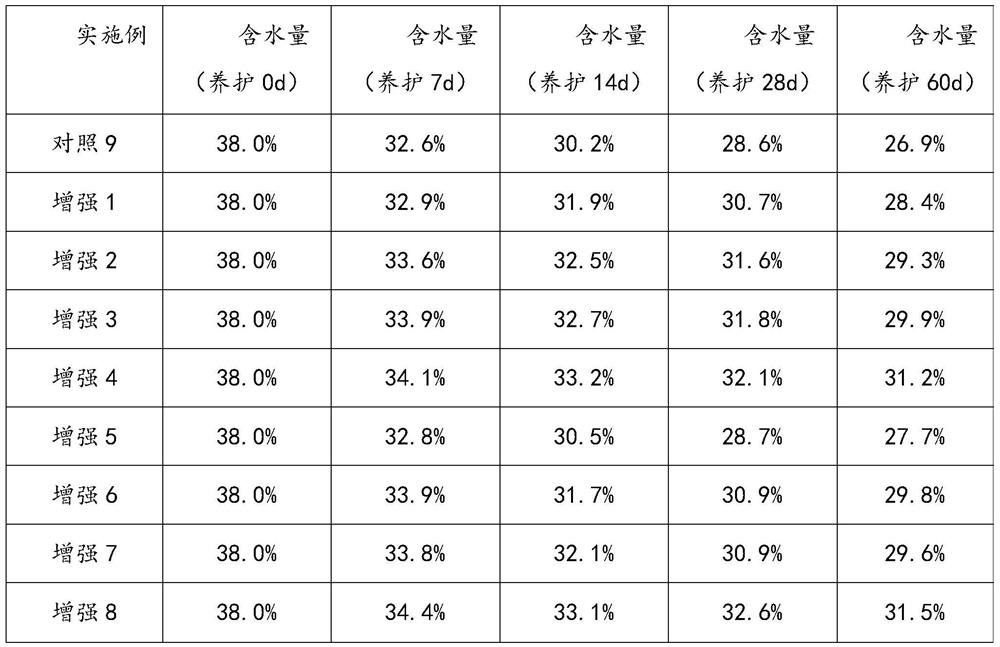Anti-cracking low-heat-transfer enhanced vertical blocking barrier material as well as preparation method and application thereof
An enhanced, crack-resistant technology
- Summary
- Abstract
- Description
- Claims
- Application Information
AI Technical Summary
Problems solved by technology
Method used
Image
Examples
Embodiment 1
[0032] 1) Sodiumized modified bentonite and polyanionic cellulose (PAC) were placed in an oven at 60°C for drying, and passed through a 200-mesh sieve for later use;
[0033] 2) Mix polyanionic cellulose (PAC) and sodium-modified bentonite at a mass ratio of 2:98, and stir with an electric stirrer at a speed of 200-500r / min for 5-10min.
[0034] 3) Pour the mixture obtained in step 2 into a PE bottle, tighten the bottle cap, place it in a reverse oscillator, shake for 24 hours, and obtain polymer modified bentonite after mixing evenly;
[0035] 4) Mix the polymer-modified bentonite obtained in step 3 and distilled water at a mass ratio of 1:10, and stir for 30-60 minutes with an electric stirrer at a constant temperature of 30-60°C at a speed of 1000-4000r / min to obtain a polymer-modified bentonite. Sexual bentonite mud;
[0036] 5) Mix granulated blast furnace slag powder and fly ash at a mass ratio of 7:3 to obtain a cementitious material, mix activated magnesium oxide and ...
Embodiment 2
[0042] 1) Sodiumized modified bentonite and polyanionic cellulose (PAC) were placed in an oven at 60°C for drying, and passed through a 200-mesh sieve for later use;
[0043] 2) Mix polyanionic cellulose (PAC) and sodium-modified bentonite at a mass ratio of 2:98, and stir with an electric stirrer at a speed of 200-500r / min for 5-10min.
[0044] 3) Pour the mixture obtained in step 2 into a PE bottle, tighten the bottle cap, place it in a reverse oscillator, shake for 24 hours, and obtain polymer modified bentonite after mixing evenly;
[0045] 4) Mix the polymer-modified bentonite obtained in step 3 and distilled water at a mass ratio of 1:10, and stir for 30-60 minutes with an electric stirrer at a constant temperature of 30-60°C at a speed of 1000-4000r / min to obtain a polymer-modified bentonite. Sexual bentonite mud;
[0046] 5) Mix granulated blast furnace slag powder and fly ash at a mass ratio of 7:3 to obtain a cementitious material, mix activated magnesium oxide and ...
Embodiment 3
[0052] 1) Sodiumized modified bentonite and polyanionic cellulose (PAC) were placed in an oven at 60°C for drying, and passed through a 200-mesh sieve for later use;
[0053] 2) Mix polyanionic cellulose (PAC) and sodium-modified bentonite at a mass ratio of 2:98, and stir with an electric stirrer at a speed of 200-500r / min for 5-10min.
[0054] 3) Pour the mixture obtained in step 2 into a PE bottle, tighten the bottle cap, place it in a reverse oscillator, shake for 24 hours, and obtain polymer modified bentonite after mixing evenly;
[0055] 4) Mix the polymer-modified bentonite obtained in step 3 and distilled water at a mass ratio of 1:10, and stir for 30-60 minutes with an electric stirrer at a constant temperature of 30-60°C at a speed of 1000-4000r / min to obtain a polymer-modified bentonite. Sexual bentonite mud;
[0056] 5) Mix granulated blast furnace slag powder and fly ash at a mass ratio of 7:3 to obtain a cementitious material, mix activated magnesium oxide and ...
PUM
| Property | Measurement | Unit |
|---|---|---|
| particle diameter | aaaaa | aaaaa |
| particle diameter | aaaaa | aaaaa |
| specific surface area | aaaaa | aaaaa |
Abstract
Description
Claims
Application Information
 Login to View More
Login to View More - R&D
- Intellectual Property
- Life Sciences
- Materials
- Tech Scout
- Unparalleled Data Quality
- Higher Quality Content
- 60% Fewer Hallucinations
Browse by: Latest US Patents, China's latest patents, Technical Efficacy Thesaurus, Application Domain, Technology Topic, Popular Technical Reports.
© 2025 PatSnap. All rights reserved.Legal|Privacy policy|Modern Slavery Act Transparency Statement|Sitemap|About US| Contact US: help@patsnap.com



